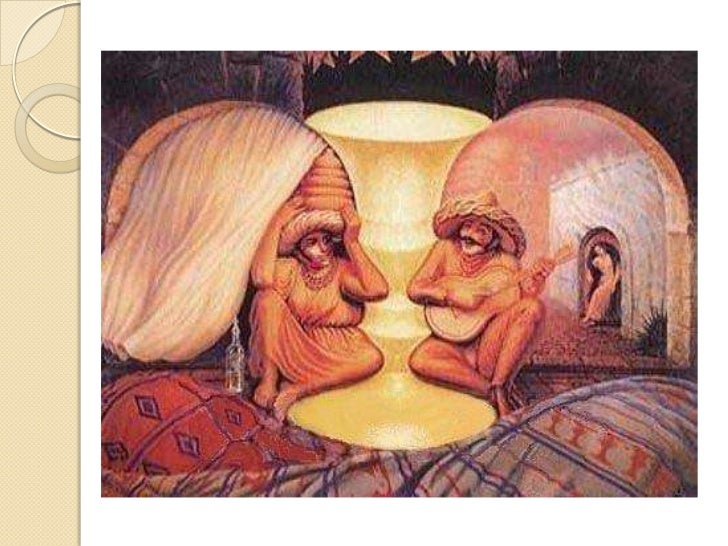Whenever I think about perception I think about this picture shown above. I thought this picture was the best example of how perception works. When looking at this picture one person might see just the older man and woman, which would be the only thing they see. The next person may see the couple along with the two Mexicans with their hats. The next person might see the vase that is in between the couple along with the two Mexicans and the woman that is looking out the door to yell to the two Mexicans. Either way we look at it some people see the pictures in different ways. The answer to this whole mess is the way we perceive things.
I personally believe that the Gestalt Theory and the Helmholtz Theory say a lot about how perception works. The Gestalt theory is to explain how we perceive things such as objects. This theory has the illusion of movement, which is also known as apparent movement. Apparent movement is although movement is perceived, nothing is actually moving. Using the figure from the book on page 64 they come up with the conclusion about apparent movement as:
1:) one light flashes on and off
2:) there is a period of darkness, lasting a fraction of a second
3:) the second light flashes on and off.
The Gestalt theory all together tries to identify things as wholes rather then individualizing them. The Helmholtz theory is his realization that the image on the retina of an eye is ambiguous. Helmholtz also explained the likelihood principle, which is that we perceive the object that is most likely to have caused the pattern of the stimuli we have received.


No comments:
Post a Comment